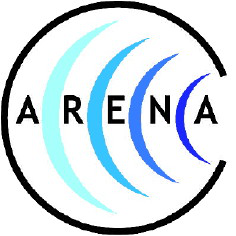Orateur
Dr
Clancy James
(Radboud University Nijmegen)
Description
The lunar Cherenkov technique, by which (currently Earth-based) radio-telescopes observe the Moon to look for UHE cosmic ray and neutrino interactions in the lunar regolith, is a promising method for probing the very highest energy fluxes of these particles. However, predictions about the sensitivity of the technique tend to gloss over a number of important unknowns. How deep is the Moon's regolith, the nominal detection medium? Can we detect near-surface cascades (i.e. cosmic rays), or is the emission suppressed? What role does lunar surface roughness on both large and small scales play? In this talk I review these issues and their implication for detection experiments, and present the latest work to resolve (and in some cases, resolving) each of these issues.
Author
Dr
Clancy James
(Radboud University Nijmegen)
Co-auteurs
Prof.
Heino Falcke
(Radboud University Nijmegen)
M.
Justin Bray
(University of Adelaide)
Prof.
Ray Protheroe
(University of Adelaide)
M.
Sander ter Veen
(Radboud University Nijmegen)

